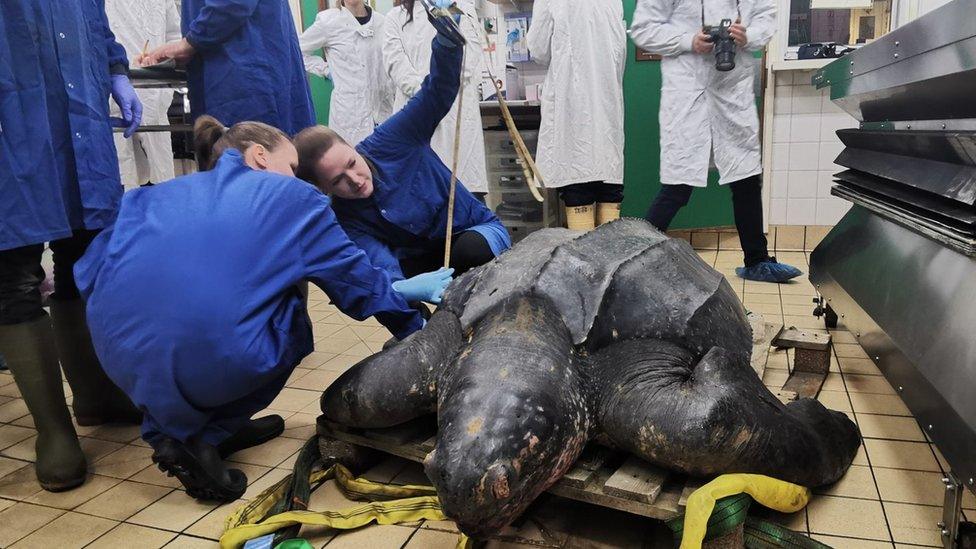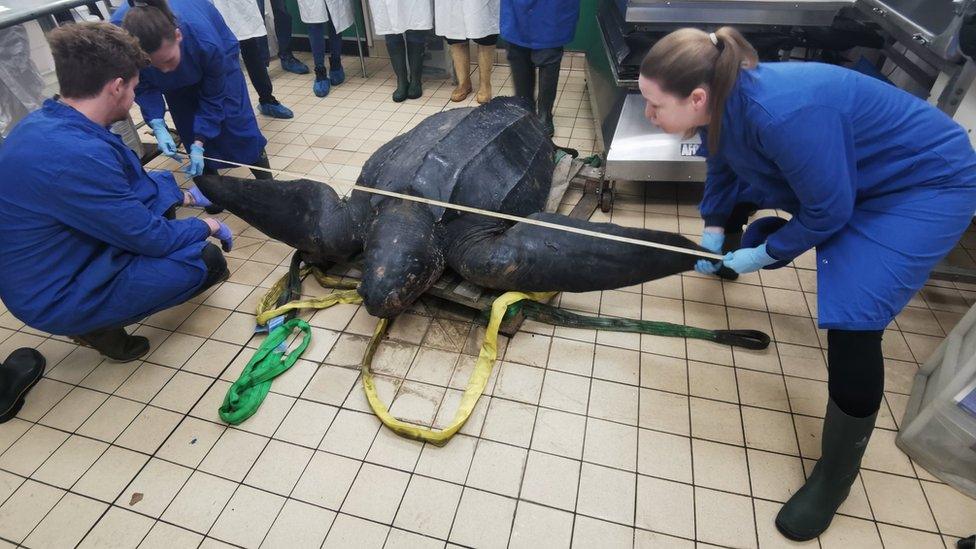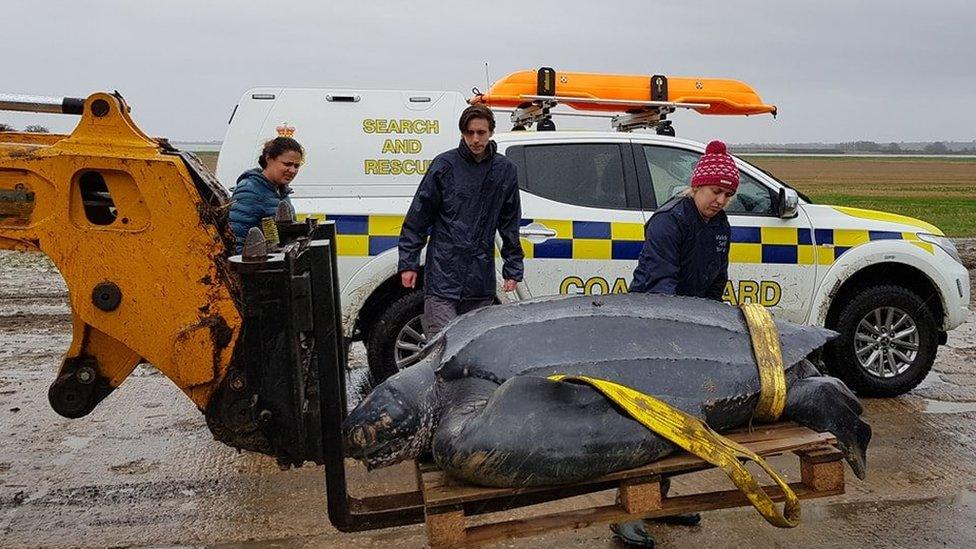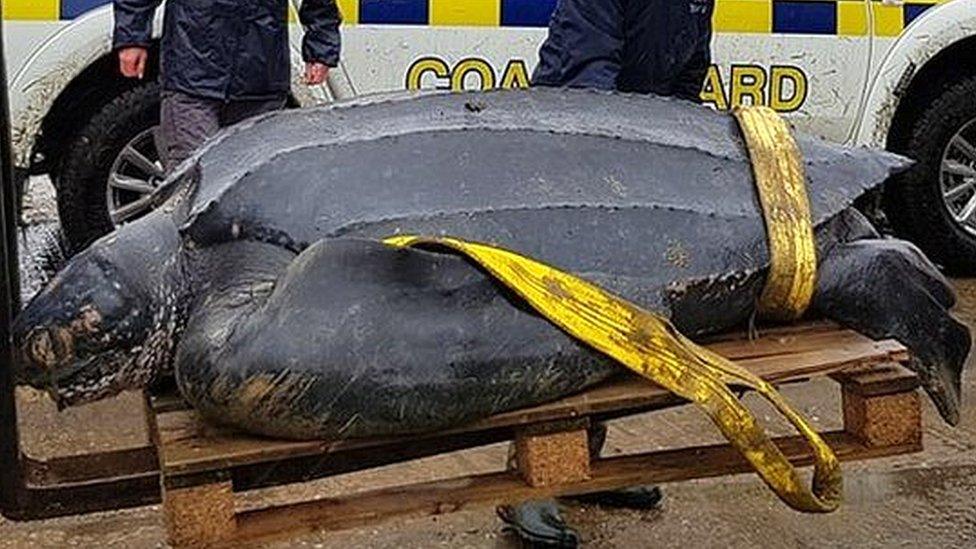Leatherback turtle 'alive when stranded' in Essex
- Published

The team took measurements of the leatherback turtle before dissecting it
A turtle rarely spotted off the UK was likely to have still been alive when it became stranded, tests suggest.
The quarter-tonne (550lb) adult male leatherback was dissected by a team from the Zoological Society of London in an attempt to establish how it died.
It was found washed up in Mundon Creek, Essex, on 11 December.
The preliminary findings are that the turtle was in a poor nutritional state, with a possible urinary tract infection and debris in its intestine.
Experts said finding debris in the intestinal tract was "common", and have not yet come to a conclusion about the cause of death.

Adult leatherback turtles can grow to 2.4m (8ft) in length
Rob Deaville, project manager for the Cetacean Strandings Investigation Programme, which records such discoveries, said it was the first post-mortem examination of a leatherback turtle they had been able to carry out since 2001.
"This is quite an unusual stranding for the location," he said.
"It's very unusual to get leatherback turtles in the southern North Sea."
The team measured the turtle and scanned it for electronic tags, before removing its shell to examine the organs.
Samples of fat and muscle were taken for toxicology analysis, and a skin sample for genetic analysis.
Examination of its lungs showed signs "indicative of a live stranding". The turtle's position on the riverbank also suggested it had swum there rather than drifted, said the team.
Full results of the post-mortem examination are expected in the new year.

The turtle's body was found on Mundon Creek on the Dengie peninsula - on the southern shore of the Blackwater estuary
Sightings of leatherback turtles in British waters are not unknown - but to find one on the east coast is "incredibly rare", according to Andrew Bailey of CSIP.
They are more usually seen in the warmer, deeper waters around Cornwall, Wales or the West of Scotland, which is closer to their natural habitat of the Atlantic Ocean, he said.
So far in 2019, 12 sightings of leatherback turtles have been reported in British and Irish waters, though only three have washed up on beaches. Of those, only the Essex turtle was in a good enough state to examine, said Mr Bailey.
The leatherback turtle is one of the largest reptiles on earth, and the biggest sea turtle, capable of growing to up to 900kg (1,980lb) in weight and 2.4m (8ft) in length.
Unlike other turtles, it does not have a hard shell but a smooth skin covering a flexible bone structure, allowing it to dive deeper than other species.
- Published13 December 2019
